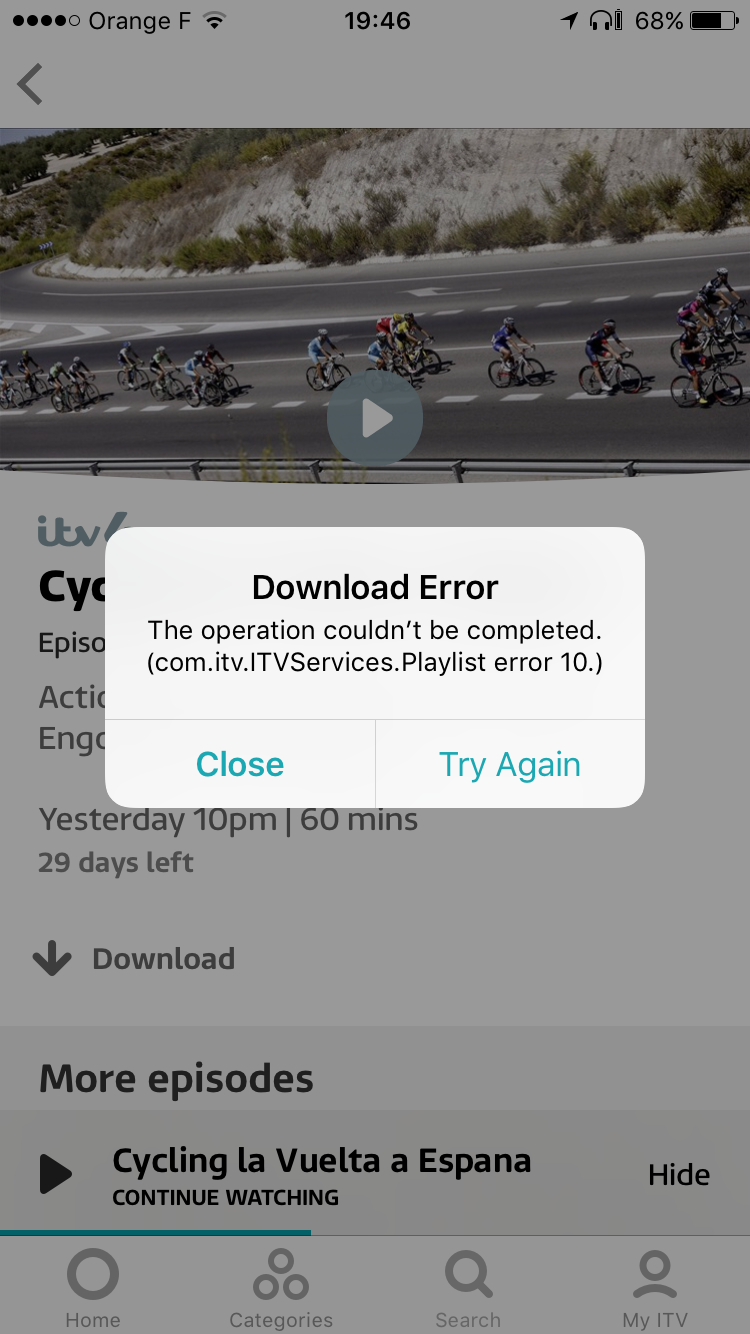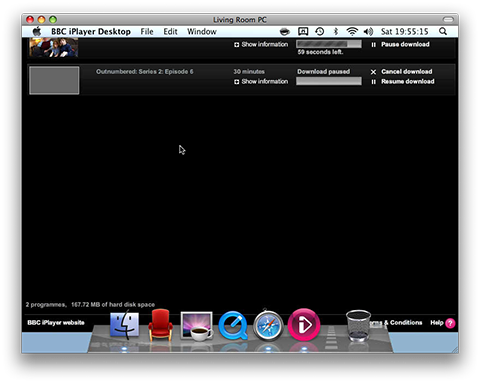Those who follow me on Twitter (@markwilsonit) will probably be aware that I recently spent some time in mainland Europe – travelling through France, Germany and Switzerland with my family. You’ll probably also be aware that one of my hobbies is road cycling – and that I like to watch the highlights from the three Grand Tours (Giro d’Italia, Tour de France and Vuelta a España) and from the Tour of Britain. With the Vuelta in full swing as my holiday started, I wanted to make sure I could still catch the highlights on ITV4!
Even with the new EU mobile roaming arrangements that mean I can use my mobile data allowance in other EU countries, I didn’t expect to be able to stream content reliably, so I took out a subscription to ITV Hub+, allowing me to download ITV programmes with the ITV Hub app (on Wi-Fi) and play back later, without ads. This worked brilliantly on the ferry to France but not so well once I was in my Paris hotel room, where the app detected I was outside the UK and denied access to content with a variety of error messages:



Downloading #Vuelta2017 over hotel Wi-Fi was always going to be a tall order… pity @itv blocks 4G… pic.twitter.com/J0dBAHj5ec
— Mark Wilson (@markwilsonit) August 23, 2017
I was pretty annoyed – after all, there was no mention of UK-only coverage when I subscribed to the ITV Hub+ and the ITV website says:
“Where can I use a Hub+ subscription?
As long as you’re signed into your account, you’ll be able to use your Hub+ subscription almost anywhere. Watch ad-free telly on our website, download and catch up on the go on your mobile or tablet, or binge on your favourite shows with no interruptions on your Smart TV!”
but I did find the limitation in their troubleshooting guide later:
“I am abroad and can’t watch videos
The ITV Hub is only available within the UK as we don’t hold international rights for all of our shows. If you’re lucky enough to be on holiday or you live abroad, you won’t be able to watch ITV Hub until you return to the UK”
After a bit of a rant on Twitter (no response from ITV, of course), I thought about using a VPN (and @JFDuncan suggested Plex).
Now I find even downloaded content won’t work. @ITV happy to take subscription £ for offline access… didn’t say at the time it was UK only https://t.co/SAMoEaytUZ
— Mark Wilson (@markwilsonit) August 23, 2017
Unfortunately, my own VPN back to my NAS didn’t work (on reflection, L2TP/IPSec was not the best choice of transport – as @GarryMartin pointed out when I originally set it up) and I was nervous about using a third party service until Justin Barker (@JustinBarker77) suggested TunnelBear:
Install @theTunnelBear (TunnelBear) and VPN back to the UK
— Justin Barker (@JustinBarker77) August 23, 2017
Recommendations are always good. And TunnelBear seemed more legitimate than some of the sites I found…
At first, I didn’t have much luck – even after following TunnelBear’s troubleshooting advice for accessing content. 24 hours later though, something had cleared (maybe I had a different IP address, maybe it was something on my iPhone) and ITV Hub+ worked flawlessly over hotel Wi-Fi and a VPN back to the UK. I could download my cycling highlights for later playback and the VPN tunnel even seemed to improve the Holiday Inn Wi-Fi reliability – possibly due to QoS restrictions prioritising potential business traffic (VPN) over leisure (downloading videos)!
Success! MW+@theTunnelBear 1: ITV Hub download restrictions 0 – #Vuelta2017-watching can resume! pic.twitter.com/MH2iAhnhn3
— Mark Wilson (@markwilsonit) August 24, 2017
I did have some challenges with playback – so I put the iPhone into Airplane Mode before watching content, just in case the ITV Hub app detected I was outside the UK again, but each time I wanted to download over the next few days I enabled the VPN and all was good. I also subscribed to TunnelBear for a month’s worth of unlimited data allowance (I soon chewed through the 1GB I got for tweeting about the service!).
Hopefully, this information will help someone else who’s frustrated by paying for a download service and then finding it doesn’t work outside the UK…
